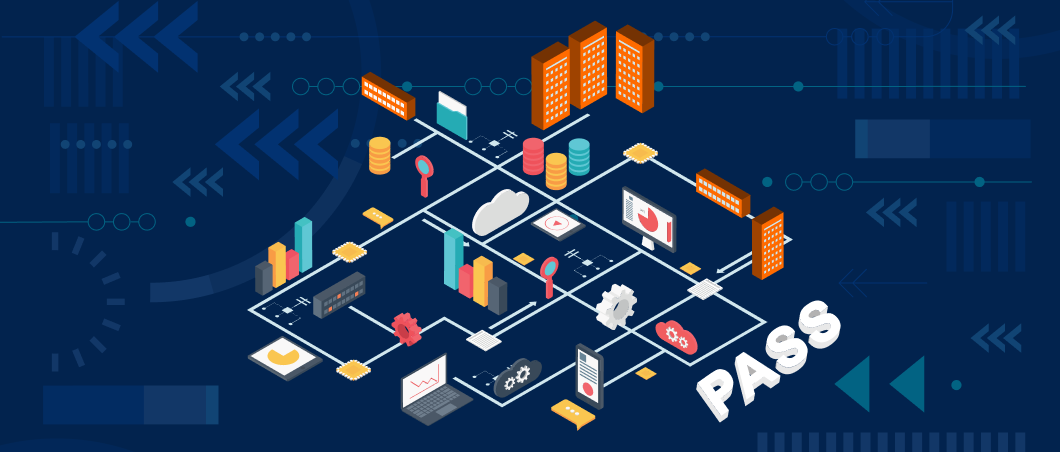Since the launch of cloud computing, XaaS (anything-as-a-service) models have been shining. From platforms to software, databases to infrastructure, networks to security – essentially anything can be offered to customers in a pay-per-use model. According to reports, the total public cloud market is expected to reach $178 billion in 2018. But as with everything else tech, old technologies die and new ones arise.
Does that hold true for Platform-as-a-service (PaaS)? Let’s explore!
What Platform-as-a-Service (PaaS) was meant to be?
The PaaS model was launched to provide customers a platform on which software could be developed and deployed. As with most cloud services, PaaS allowed businesses to add resources as and when needed, scaling as demand grew, and paying only for what they used. Developers loved PaaS since it freed them from dealing with servers and offered an environment in which complexities around hardware, software, network, and operating system infrastructure were taken care of. All developers had to do was focus on developing and scaling cloud-based applications.
Why is PaaS (Platform as a Service) dying?
Although PaaS models are still being used across the world, they are becoming more and more incapable of meeting the needs of modern web and mobile applications – especially for large companies with massive scalability plans. Also, with the growth of Information-as-a-service (IaaS) models that provide everything that PaaS models did and a lot more, PaaS models don’t seem to have much more to offer. The PaaS market grew from $5 billion in 2013 to $11 billion in 2018 as compared to IaaS which grew from $16 billion to $34 billion in the same period.
Here are some possible reasons why PaaS offers less value today:
Inflexible:
The intent of a PaaS model makes total theoretical sense, but since not all software vendors support PaaS platforms, developers are forced to spend time, money and effort in custom integration. This also adds a large amount of risk. Also, since PaaS models often impose several restrictions on programming languages, models, databases, and tools, developers are forced to use a “one-size-fits-all” approach – limiting application maturity and innovation to a great extent.
Complex:
Most PaaS models rely on a variety of complex technologies to run their operations, rigid Linux containers, isolated file systems, and more. This makes running applications a cumbersome and expensive challenge, especially when applications have to be scaled to meet the growing demand.
Expensive:
Although using PaaS to build applications might seem beneficial in the beginning, there is a high cost of operations over time. Offloading most of the server management activities can help save costs initially, but as the application scales, the costs do too. Due to the underlying complex technologies, running a vast number of apps on a PaaS model makes maintaining and updating the stack very expensive. And since PaaS models involve various other vendors such as the database, security, etc., companies end up paying for many different vendors (and their margins).
Poor Security:
In an age of rampant cyber-attacks and security scandals, the mandateis for high-security applications. With a PaaS model, there is no way for developers to isolate backend resources. Restrictions on using VPNs to secure data and limited security options make matters worse. Also, with growing requirements for endpoint security around mobile APIs and IoT, companies may find it difficult to add more infrastructure layers within their PaaS model to secure their data.
Availability Issues:
While building modern applications, high-availability is an essential pre-requisite. However, PaaS models offer limited availability. What’s more, the lack of IP-based filtering and denial-of-service (DoS) prevention compels businesses to add more processes to handle the increased load. This does not adequately solve the availability problem.
Vendor Lock-In:
Since PaaS models offer companies the platform required to build software and applications, they often become responsible for providing a lot of additional systems such as monitoring, backups, databases, and more. This causes a kind of vendor lock-in and restricts companies from considering the vast array of third-party tools available that can help them in supporting specific features.
Situations where using PaaS still makes sense
Forrester predicts that more than 50% of global companies will rely on at least one public cloud platform to drive digital transformation, and delight customers. Statista predicts the PaaS market will reach $48 billion by 2026. Although PaaS might not disappear, there’s a huge chance it will be merged and integrated into larger IaaS platforms.
PaaS is not seen as an ideal platform for large businesses but is popular with smaller companies that:
- Do not want to be restricted by the limitations of traditional on-premise development environments and want to leverage the benefits of a cloud-based model
- Look to leverage a rich development environment with social and mobile built-in and develop small-scale responsive apps with limited functionality
- Want to focus only on developing cutting-edge applications and not on the infrastructure binding it
- Look to save up on initial infrastructure costs and automate a large portion of their development and deployment activities
- Do not have a separate development and operations department – PaaS frees them from having to take care of Ops and facilitates them to meet their goals.
- Have limited requirements and no major scalability goals
Make the Right Choice
Although PaaS was one of the first models to be offered in cloud computing, over the years, it has become less relevant – especially for large organizations who fear losing out on innovation due to the inherent rigidity. As software needs grow, a one-size-fits-all approach doesn’t work and high availability, flexibility, and security become primary requisites – which today’s complex and expensive PaaS models fail to offer. However, there are many cases where a PaaS solution is perfectly valid, reasonable and economical. Knowing when a PaaS model makes sense and making the right choice is the best way to make the most of your cloud investment.



